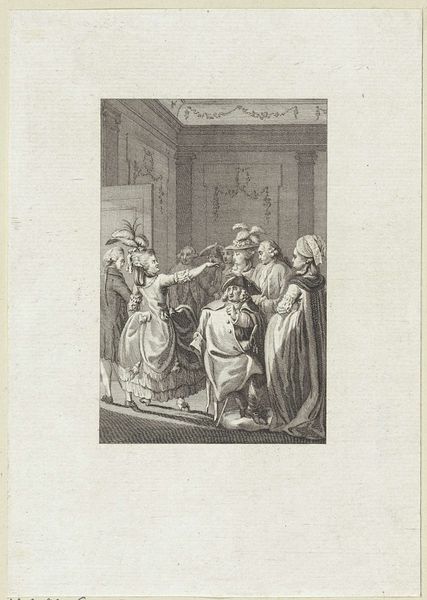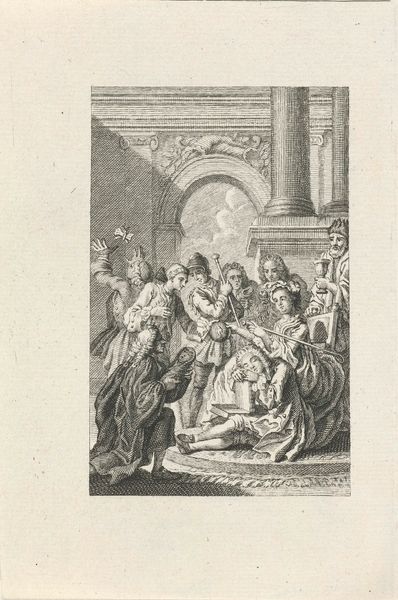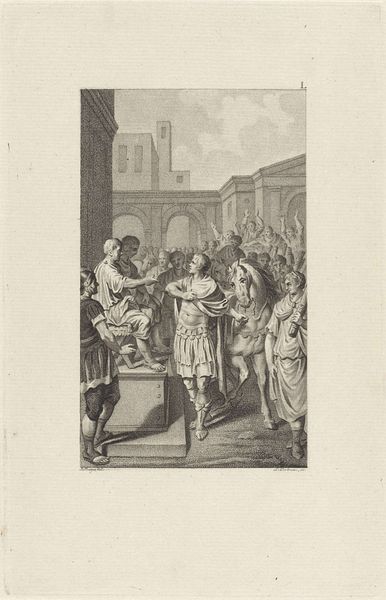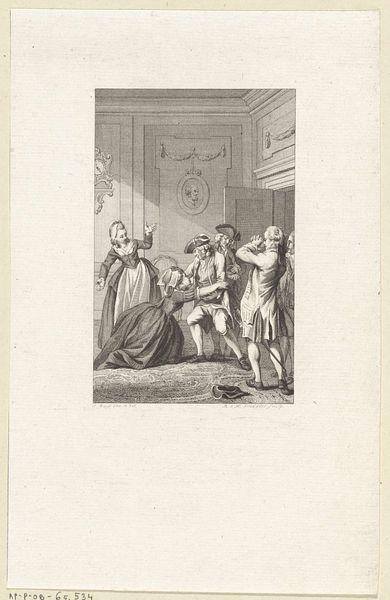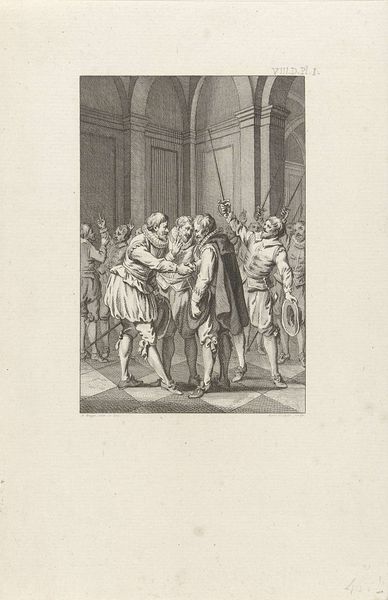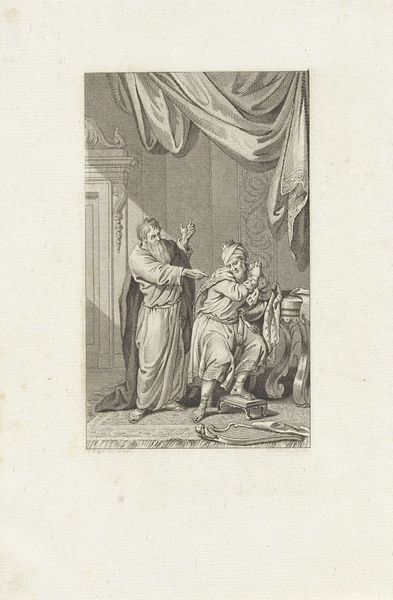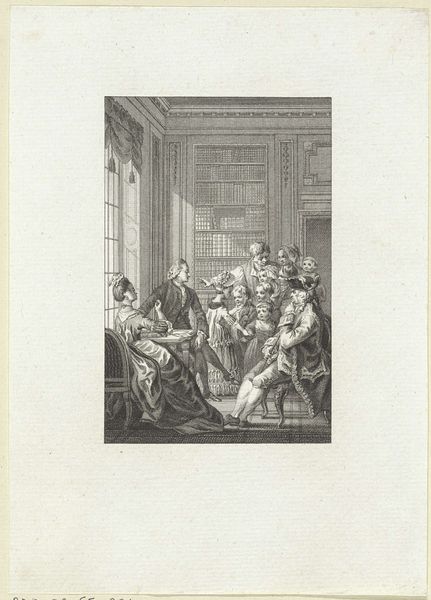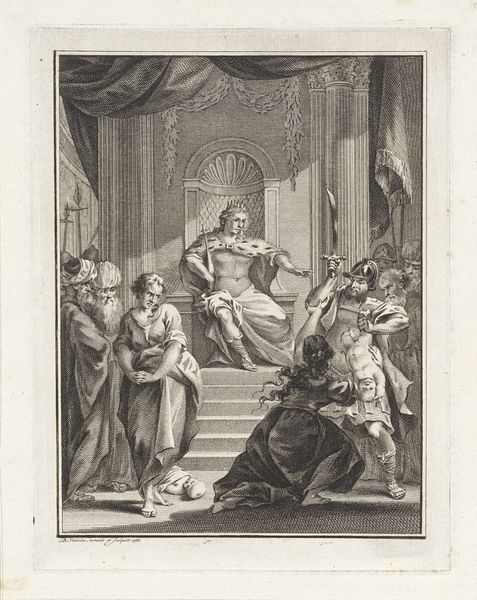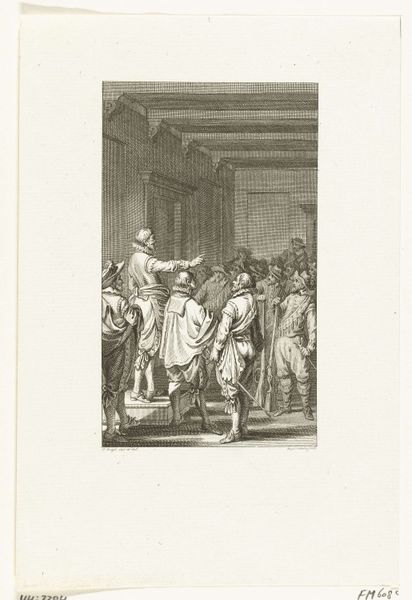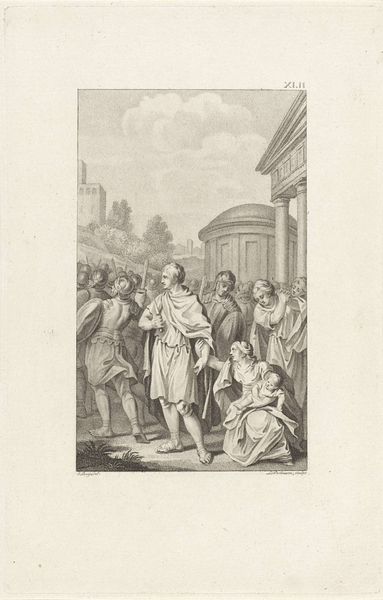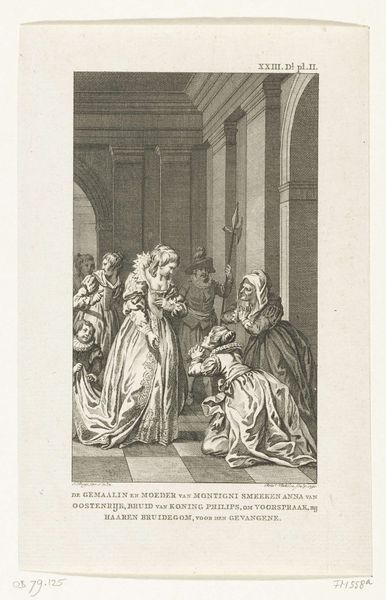
engraving
#
neoclacissism
#
old engraving style
#
classical-realism
#
geometric
#
history-painting
#
engraving
Dimensions: height 200 mm, width 133 mm
Copyright: Rijks Museum: Open Domain
Curator: Allow me to introduce "Caesar in de tempel van Saturnus," an engraving created around 1800 by Ludwig Gottlieb Portman. It resides here at the Rijksmuseum. Editor: It's stark, almost severe. The composition seems to be driven by lines, a geometry of power and architectural assertion rendered in monochrome. Curator: Precisely! Observe how the artist employs classical realism, embracing the neoclassical movement’s dedication to form and order. Semiotics suggest the geometric precision reinforces the theme of Caesar’s ordered dominion. Editor: While that’s apparent, let's consider the labor involved in engraving at that scale with that level of detail. How did the economics of printmaking influence Portman's production of reproducible images, reaching a potentially wider audience? Curator: Interesting observation. However, focus instead on the artwork’s internal structure: the interplay of light and shadow, defining Caesar and his retinue. This juxtaposition against the architectural forms heightens the dramatic tension. It signifies power relations but using visual codes of balance and harmony. Editor: But it’s also a manufactured power, isn’t it? Consider the raw materials - the metal plate, the inks - the mechanical, repetitive act of making these prints implies something about mass culture even then. There’s a commentary there too. Curator: Certainly, your material-driven perspective unveils an intriguing layer. Yet, return to Portman's refined lines and measured compositions—he constructs a Caesar not just of conquest but of philosophical command. This work engages the history painting tradition. Editor: Right, it definitely pulls you in both ways; between the heroic narrative presented and its inherent material creation. One can't quite escape either, can they? Curator: Not at all. Thank you for highlighting that interplay, Editor. Portman has afforded us avenues for exploration beyond simple representation of power. Editor: Indeed, a work that reminds us how form and production both shape how we understand historical narratives, Curator.
Comments
No comments
Be the first to comment and join the conversation on the ultimate creative platform.
